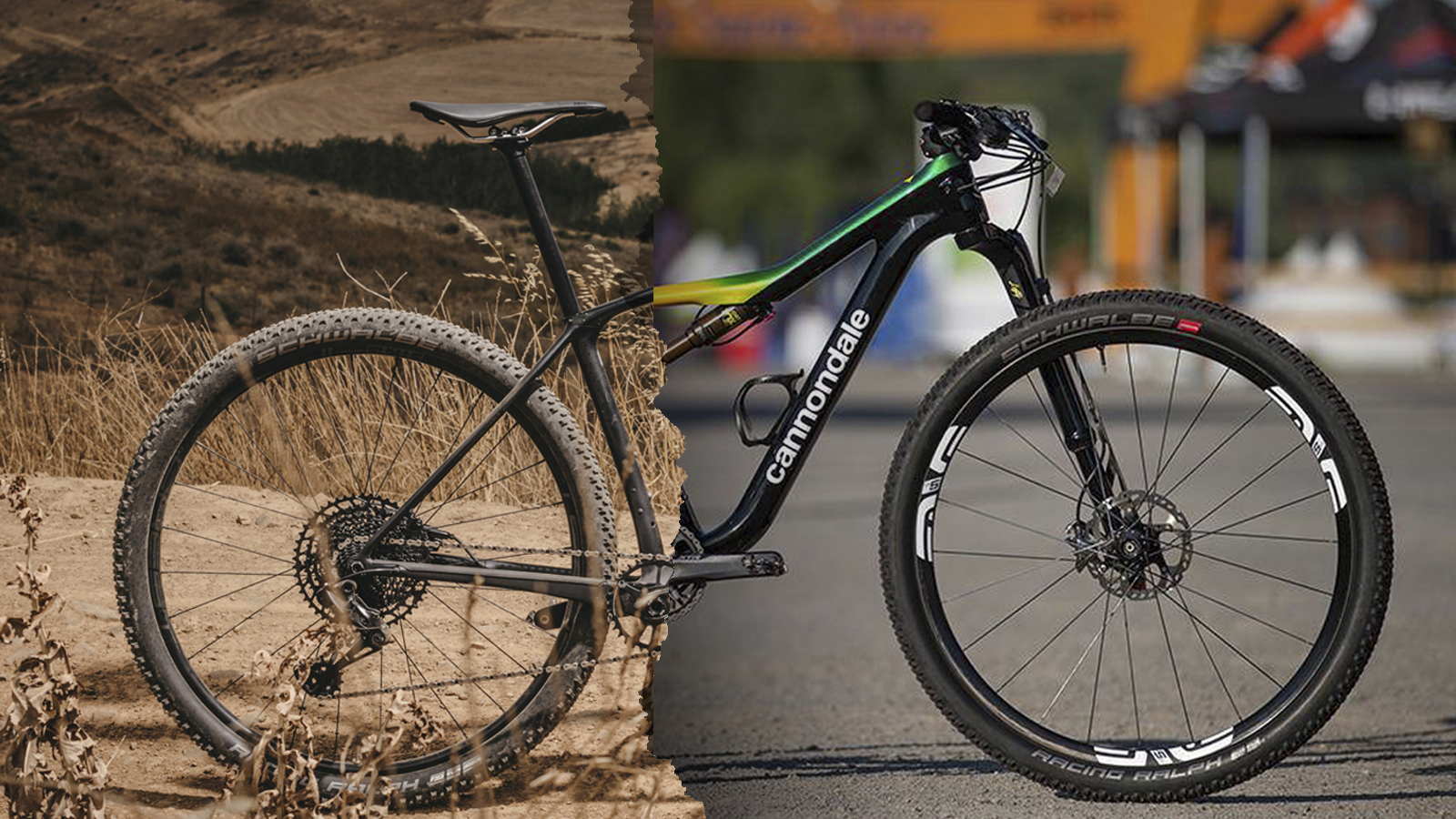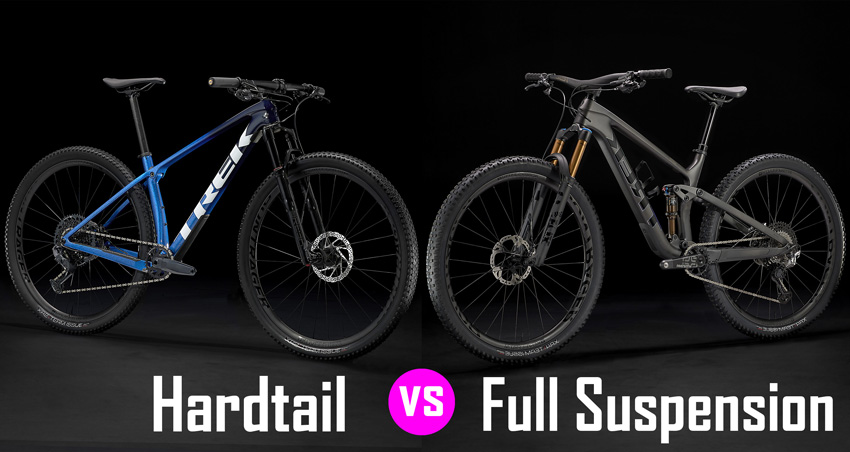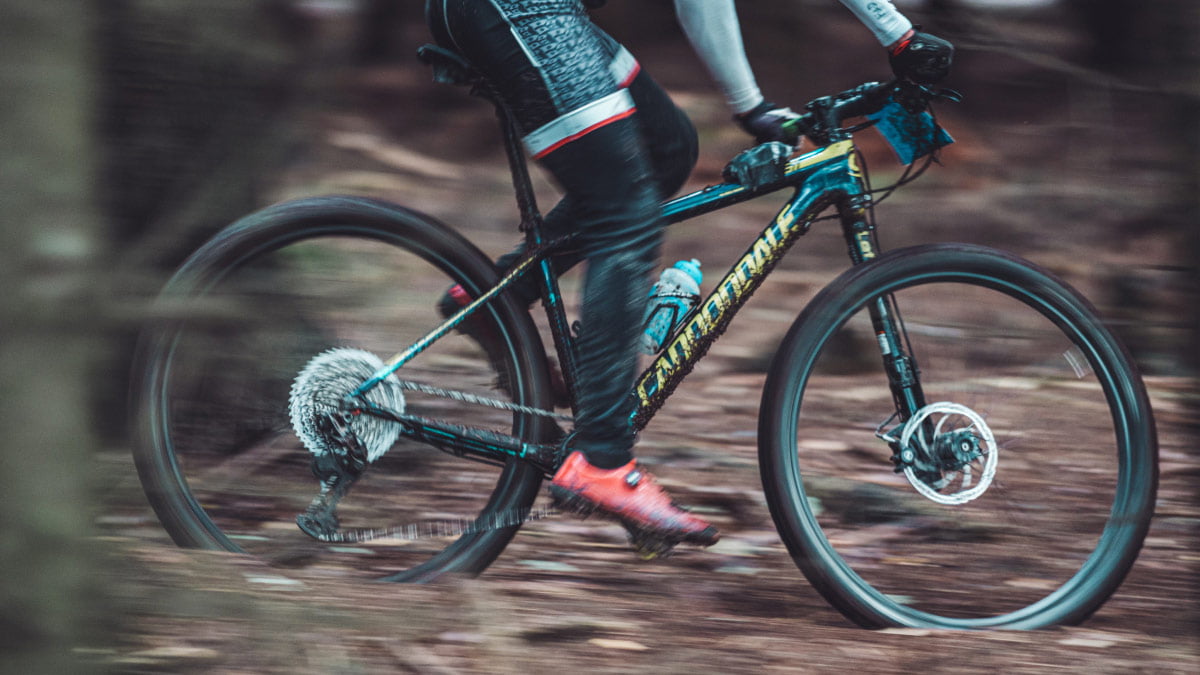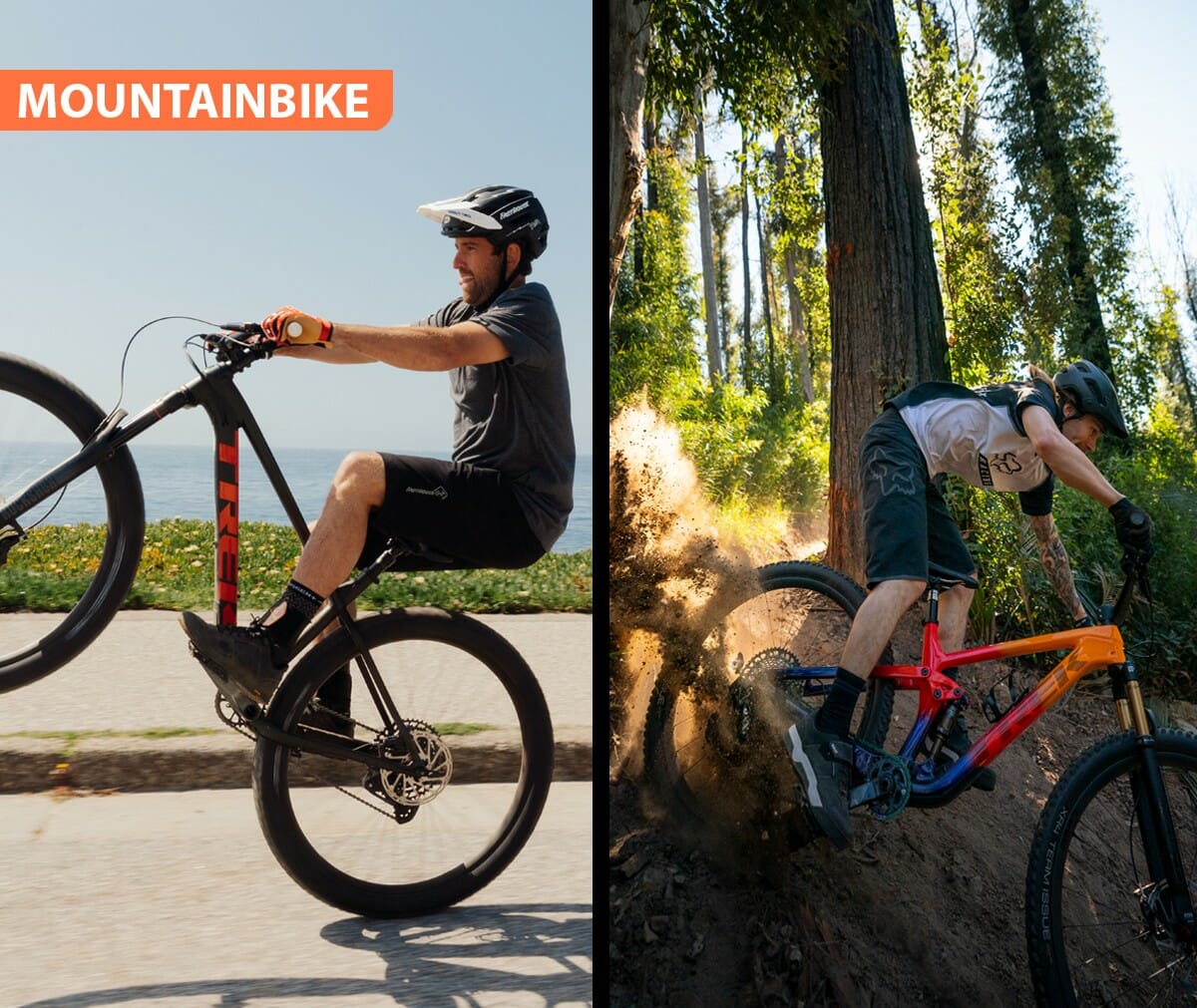Understanding the Difference: Full Suspension vs Hardtail MTB
When it comes to choosing the right mountain bike, one of the most important decisions is whether to opt for a full suspension or hardtail model. Both types of bikes have their own unique characteristics, advantages, and disadvantages, making it essential to understand the differences before making a purchase.
A full suspension mountain bike features a front fork and rear shock, which work together to absorb the impact of rough terrain, providing a smoother ride and improved control. This type of bike is ideal for riders who frequent technical trails, enjoy downhill riding, or need a bike that can handle high-speed descents. The added suspension also reduces the impact on the rider’s body, making it a great option for those who prioritize comfort.
On the other hand, a hardtail mountain bike features a front fork but no rear suspension. This design makes hardtail bikes lighter, more efficient, and easier to maintain. Hardtail bikes are perfect for riders who focus on cross-country, endurance, or casual trail riding. They are also an excellent choice for those on a budget or who prefer a more straightforward, low-maintenance bike.
While full suspension bikes offer improved comfort and control, they can be heavier and more expensive. Hardtail bikes, on the other hand, are often more affordable and require less maintenance, but may not provide the same level of comfort and control on technical terrain. Ultimately, the choice between a full suspension and hardtail MTB depends on the rider’s specific needs, preferences, and riding style.
When deciding between a full suspension and hardtail mountain bike, consider the type of terrain you will be riding on most often. If you frequent rough, technical trails or enjoy downhill riding, a full suspension bike may be the better choice. However, if you focus on cross-country, endurance, or casual trail riding, a hardtail bike could be the perfect option.
It’s also essential to consider your budget and personal preferences. If you prioritize comfort and control, a full suspension bike may be worth the investment. However, if you’re on a tighter budget or prefer a more straightforward, low-maintenance bike, a hardtail model could be the way to go.
How to Choose the Perfect Ride for Your Trail Adventures
Choosing the right mountain bike can be a daunting task, especially for those new to the sport. With so many options available, it’s essential to consider several factors to ensure you find the perfect ride for your trail adventures. In this section, we’ll explore the key considerations to keep in mind when selecting a mountain bike, including terrain, riding style, and budget.
Terrain is a critical factor to consider when choosing a mountain bike. Different types of terrain require different types of bikes. For example, if you’ll be riding on smooth, flowing trails, a hardtail bike may be the perfect choice. However, if you’ll be tackling technical, rocky trails, a full suspension bike may be a better option. Consider the type of terrain you’ll be riding on most often and choose a bike that’s designed to handle it.
Riding style is another essential factor to consider. If you’re a casual rider who enjoys leisurely rides on smooth trails, a hardtail bike may be the way to go. However, if you’re an aggressive rider who enjoys technical trails and high-speed descents, a full suspension bike may be a better choice. Consider your riding style and choose a bike that’s designed to handle your needs.
Budget is also an important consideration when choosing a mountain bike. Mountain bikes can range in price from a few hundred to several thousand dollars. Set a budget and stick to it. Consider what features are essential to you and what you can compromise on. Keep in mind that a more expensive bike doesn’t always mean it’s the best choice for you.
Test riding is also crucial when choosing a mountain bike. Don’t be afraid to take a bike for a spin to see how it feels. Pay attention to the bike’s handling, comfort, and overall performance. This will give you a better idea of whether the bike is right for you.
Getting a proper bike fit is also essential. A bike that’s too small or too large can be uncomfortable and affect your performance. Consider visiting a local bike shop and getting a professional bike fit. This will ensure that your bike is tailored to your specific needs and riding style.
Finally, consider the type of riding you’ll be doing most often. If you’ll be riding on smooth trails, a hardtail bike may be the perfect choice. However, if you’ll be tackling technical trails, a full suspension bike may be a better option. Consider your specific needs and choose a bike that’s designed to handle them.
The Benefits of Full Suspension: A Closer Look
Full suspension mountain bikes have become increasingly popular in recent years, and for good reason. These bikes offer a range of benefits that make them ideal for riders who want to tackle technical trails and challenging terrain. In this section, we’ll take a closer look at the advantages of full suspension mountain bikes, including improved comfort, increased control, and enhanced overall performance.
One of the main benefits of full suspension mountain bikes is improved comfort. The addition of a rear shock and front fork allows the bike to absorb the impact of rough terrain, reducing the amount of vibration and shock that is transferred to the rider. This makes for a more comfortable ride, especially on long, technical trails. Additionally, the suspension system helps to reduce fatigue, allowing riders to stay fresh and focused for longer periods of time.
Full suspension mountain bikes also offer increased control and stability. The suspension system helps to keep the wheels in contact with the ground, even on rough and uneven terrain. This provides riders with more confidence and control, allowing them to tackle challenging trails with ease. Additionally, the suspension system helps to reduce the risk of accidents, as it allows riders to maintain control of the bike even in difficult conditions.
Another benefit of full suspension mountain bikes is enhanced overall performance. The suspension system allows the bike to maintain speed and momentum, even on technical trails. This makes for a more efficient ride, as riders can maintain their speed and flow without having to slow down or lose momentum. Additionally, the suspension system helps to improve cornering and braking performance, allowing riders to tackle challenging trails with confidence.
When it comes to full suspension mountain bikes, there are several key features to consider. Travel, geometry, and suspension design are all important factors to consider when choosing a full suspension bike. Travel refers to the amount of movement in the suspension system, with longer travel bikes providing more comfort and control. Geometry refers to the shape and design of the bike, with slacker head angles and longer wheelbases providing more stability and control. Suspension design refers to the type of suspension system used, with different systems offering varying levels of comfort and control.
Some popular full suspension mountain bikes include the Trek Fuel EX, the Specialized Stumpjumper, and the Giant TCX. These bikes offer a range of features and benefits, including improved comfort, increased control, and enhanced overall performance. When choosing a full suspension mountain bike, it’s essential to consider your specific needs and riding style, as well as the type of terrain you’ll be riding on most often.
Hardtail MTBs: The Unsung Heroes of the Trail
Hardtail mountain bikes are often overlooked in favor of their full suspension counterparts, but they offer a unique set of benefits and advantages that make them an excellent choice for many riders. In this section, we’ll explore the benefits and advantages of hardtail mountain bikes, including their simplicity, durability, and cost-effectiveness.
One of the main benefits of hardtail mountain bikes is their simplicity. Without the added complexity of a rear suspension system, hardtail bikes are easier to maintain and repair. This makes them an excellent choice for riders who want a low-maintenance bike that can withstand the rigors of frequent use.
Hardtail mountain bikes are also incredibly durable. Without the added stress of a rear suspension system, hardtail bikes are less prone to mechanical failure and can withstand the rigors of rough terrain. This makes them an excellent choice for riders who want a bike that can keep up with their active lifestyle.
Another benefit of hardtail mountain bikes is their cost-effectiveness. Without the added expense of a rear suspension system, hardtail bikes are often significantly cheaper than their full suspension counterparts. This makes them an excellent choice for riders who are on a budget or who want to get into mountain biking without breaking the bank.
When it comes to hardtail mountain bikes, there are several key features to consider. The type of frame material, wheel size, and tire width are all important factors to consider when choosing a hardtail bike. Aluminum and steel frames are popular choices for hardtail bikes, as they offer a great balance of strength, durability, and affordability. Wheel size and tire width are also important considerations, as they can affect the bike’s handling and stability.
Some popular hardtail mountain bikes include the Specialized Rockhopper, the Trek X-Caliber, and the Giant TCX. These bikes offer a range of features and benefits, including simplicity, durability, and cost-effectiveness. When choosing a hardtail mountain bike, it’s essential to consider your specific needs and riding style, as well as the type of terrain you’ll be riding on most often.
Hardtail mountain bikes are an excellent choice for riders who want a low-maintenance, durable, and cost-effective bike that can handle a variety of terrain. Whether you’re a beginner or an experienced rider, a hardtail bike can provide a fun and rewarding riding experience. By considering the benefits and advantages of hardtail mountain bikes, you can make an informed decision and find the perfect bike for your trail adventures.
Real-World Examples: Comparing the Trek Fuel EX and the Specialized Rockhopper
In this section, we’ll compare and contrast two popular mountain bikes, the Trek Fuel EX (full suspension) and the Specialized Rockhopper (hardtail). We’ll highlight their key features, specifications, and riding characteristics to give you a better understanding of the differences between full suspension and hardtail mountain bikes.
The Trek Fuel EX is a full suspension mountain bike designed for trail riding and cross-country adventures. It features a lightweight aluminum frame, a RockShox Recon fork, and a Fox Float rear shock. The Fuel EX also comes equipped with a Shimano XT drivetrain, hydraulic disc brakes, and a set of Bontrager XR2 tires. With its full suspension design, the Fuel EX provides a smooth and comfortable ride, even on rough terrain.
The Specialized Rockhopper, on the other hand, is a hardtail mountain bike designed for trail riding and cross-country adventures. It features a lightweight aluminum frame, a RockShox Recon fork, and a set of Specialized Ground Control tires. The Rockhopper also comes equipped with a Shimano XT drivetrain and hydraulic disc brakes. With its hardtail design, the Rockhopper provides a more efficient and responsive ride, making it ideal for riders who prioritize speed and agility.
When comparing the Trek Fuel EX and the Specialized Rockhopper, it’s clear that both bikes have their strengths and weaknesses. The Fuel EX provides a more comfortable ride, thanks to its full suspension design, while the Rockhopper offers a more efficient and responsive ride, thanks to its hardtail design. Ultimately, the choice between these two bikes will depend on your specific needs and riding style.
In terms of specifications, the Trek Fuel EX has a slightly longer wheelbase and a slacker head angle than the Specialized Rockhopper. This gives the Fuel EX a more stable and confident feel, especially at high speeds. The Rockhopper, on the other hand, has a slightly shorter wheelbase and a steeper head angle, making it more agile and responsive.
When it comes to riding characteristics, the Trek Fuel EX is known for its smooth and comfortable ride, thanks to its full suspension design. The Specialized Rockhopper, on the other hand, is known for its efficient and responsive ride, thanks to its hardtail design. Both bikes are capable of handling a variety of terrain, from smooth singletrack to rough and technical trails.
Ultimately, the choice between the Trek Fuel EX and the Specialized Rockhopper will depend on your specific needs and riding style. If you prioritize comfort and control, the Fuel EX may be the better choice. If you prioritize speed and agility, the Rockhopper may be the better choice. By considering the key features, specifications, and riding characteristics of these two bikes, you can make an informed decision and find the perfect bike for your trail adventures.
Upgrades and Customization: Taking Your Ride to the Next Level
Whether you’re riding a full suspension or hardtail mountain bike, there are many ways to upgrade and customize your ride to take it to the next level. In this section, we’ll explore the possibilities for upgrading and customizing both types of bikes, including component swaps, suspension tuning, and other modifications.
One of the most common upgrades for mountain bikes is a component swap. This can include upgrading to a new set of wheels, a lighter frame, or a more efficient drivetrain. Component swaps can make a big difference in the performance and handling of your bike, and can be a great way to breathe new life into an older bike.
Suspension tuning is another popular upgrade for mountain bikes. This can include adjusting the suspension settings to better suit your riding style, or upgrading to a more advanced suspension system. Suspension tuning can make a big difference in the comfort and control of your bike, and can be a great way to improve your overall riding experience.
Other modifications that can be made to mountain bikes include upgrading the brakes, adding a dropper post, or installing a new set of tires. These upgrades can make a big difference in the performance and handling of your bike, and can be a great way to customize your ride to suit your specific needs and preferences.
When it comes to upgrading and customizing your mountain bike, it’s essential to consider your specific needs and riding style. Different upgrades and modifications will be more or less suitable depending on the type of riding you do, and the terrain you ride on. By considering your specific needs and riding style, you can make informed decisions about which upgrades and modifications to make, and can ensure that your bike is optimized for your specific needs.
Upgrading and customizing your mountain bike can also be a great way to extend the life of your bike, and to keep it running smoothly and efficiently. By making regular upgrades and modifications, you can ensure that your bike remains in good condition, and that it continues to perform well over time.
In addition to upgrading and customizing your mountain bike, it’s also essential to regularly maintain and service your bike. This can include cleaning and lubricating the chain, checking and adjusting the brakes, and making sure that the tires are properly inflated. By regularly maintaining and servicing your bike, you can ensure that it continues to run smoothly and efficiently, and that it remains in good condition over time.
Trail Riding Techniques: Getting the Most Out of Your Bike
Once you’ve chosen the right mountain bike for your trail adventures, it’s time to focus on developing the skills and techniques necessary to get the most out of your bike. In this section, we’ll provide tips and advice on how to improve your trail riding skills, including techniques for cornering, braking, and climbing.
Cornering is a critical skill for mountain bikers, as it allows you to navigate tight turns and maintain control on technical trails. To improve your cornering skills, focus on using your body weight to steer the bike, rather than relying solely on the handlebars. Shift your weight to the inside of the turn, keeping your knees bent and your weight centered over the bike. This will help you maintain balance and control, even on tight and technical turns.
Braking is another essential skill for mountain bikers, as it allows you to slow down and control your speed on steep and technical trails. To improve your braking skills, focus on using both the front and rear brakes in conjunction with each other. Apply gentle pressure to the brakes, gradually increasing the pressure as needed to slow down or come to a stop. Avoid slamming on the brakes, as this can cause the bike to skid or lose control.
Climbing is a challenging aspect of mountain biking, as it requires a combination of physical fitness, technical skill, and mental toughness. To improve your climbing skills, focus on using a steady and consistent pace, rather than trying to sprint up the hill. Keep your weight centered over the bike, with your knees bent and your weight evenly distributed between the saddle and the handlebars. Use your legs to power the bike, rather than relying solely on your arms and upper body.
Practice and patience are key to improving your trail riding skills. Start with short, gentle trails and gradually work your way up to more challenging terrain. Focus on developing good bike handling skills, including cornering, braking, and climbing. With time and practice, you’ll become more confident and proficient on the trails, and you’ll be able to tackle even the most challenging terrain with ease.
In addition to developing good bike handling skills, it’s also essential to focus on your physical fitness and conditioning. Regular exercise and training can help improve your endurance, strength, and agility, making it easier to tackle challenging trails and terrain. Consider incorporating cardio and strength training into your workout routine, as well as practicing yoga or other flexibility exercises to improve your flexibility and balance.
Finally, remember to always wear proper safety gear when riding, including a helmet, gloves, and protective eyewear. This will help protect you from injury in the event of a crash or fall, and will give you the confidence and peace of mind to ride more aggressively and take on more challenging terrain.
Conclusion: Finding the Perfect Balance for Your Trail Adventures
In conclusion, choosing the right mountain bike for your trail adventures can be a daunting task, but by considering the key factors outlined in this article, you can make an informed decision and find the perfect bike for your needs. Whether you’re a seasoned pro or just starting out, it’s essential to consider your riding style, terrain, and budget when selecting a mountain bike.
Full suspension and hardtail mountain bikes both have their advantages and disadvantages, and the right choice for you will depend on your specific needs and preferences. By understanding the fundamental differences between these two types of bikes, you can make a more informed decision and find the perfect bike for your trail adventures.
Remember to test ride and experiment with different bikes to find your perfect match. Don’t be afraid to ask questions and seek advice from experienced riders and bike shop professionals. With the right bike and a little practice, you’ll be tackling the trails like a pro in no time.
In the end, the most important thing is to find a bike that you’re comfortable on and that meets your specific needs and riding style. By doing your research and taking the time to find the right bike, you’ll be able to enjoy the trails and get the most out of your mountain biking experience.
So, what are you waiting for? Get out there and start exploring the trails on your new mountain bike Whether you’re a seasoned pro or just starting out, the world of mountain biking has something to offer everyone. Happy trails!









